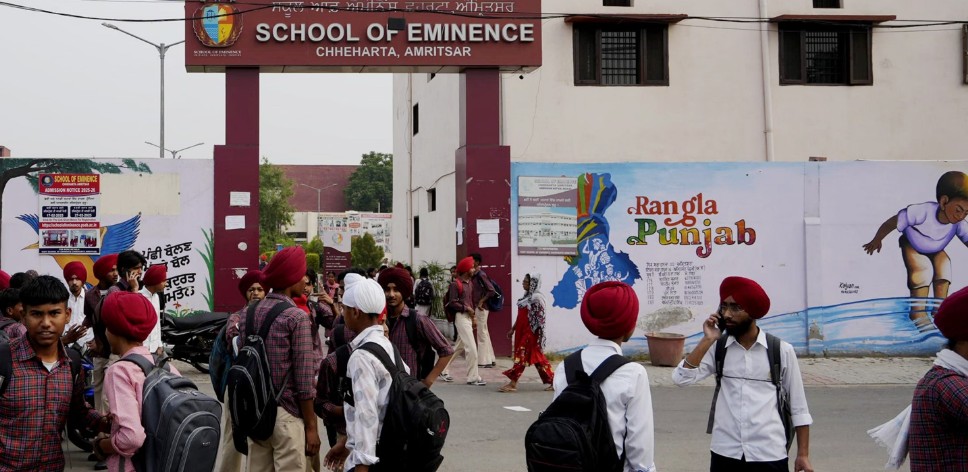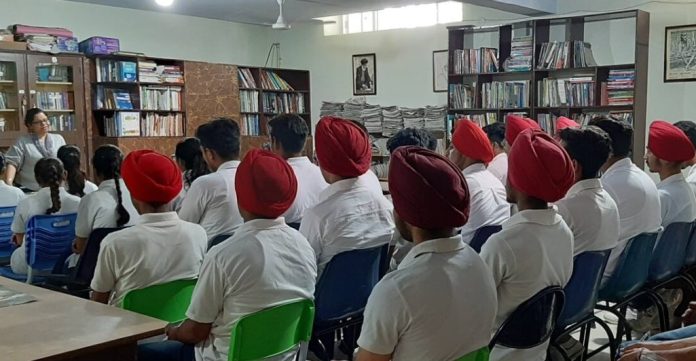In a decisive move prioritizing the health and well-being of its youngest citizens, the Punjab government has officially announced the commencement of summer vacations for all schools across the state from June 2 to June 30, 2025. This timely declaration, coming directly from Education Minister Harjot Singh Bains on Monday, May 26, 2025, encompasses all government, government-aided, recognized, and private educational institutions. The decision has been taken in direct response to the prevailing and anticipated severe heatwave conditions sweeping across the region, a measure deemed essential to safeguard students from the debilitating effects of extreme summer temperatures.
The timing of this announcement reflects a proactive stance by the state administration, acknowledging the burgeoning intensity of the summer heat that has gripped Punjab in recent weeks. Meteorological data indicates that temperatures in several key districts, including Bathinda, Patiala, and Amritsar, have already soared past the critical 44°C mark, with forecasts predicting a continuation of these scorching conditions into early June. These elevated temperatures are not merely uncomfortable; they pose significant health risks, particularly for children who are more vulnerable to heat-related illnesses than adults. The oppressive heat can lead to heat stress, exhaustion, and in severe cases, life-threatening heatstroke, alongside issues like dehydration and chronic respiratory problems. The decision to close schools is a direct intervention to mitigate these immediate health hazards, ensuring that children are not exposed to the harshest elements of the day during their commute or while engaged in school activities.
The rationale behind this preemptive and comprehensive vacation announcement is multi-faceted. Sending children to school in such extreme weather conditions presents numerous challenges. The journey to and from school, often undertaken in crowded public transport or on foot under the glaring sun, can be physically taxing and dangerous. Within school premises, despite efforts to provide cooling, maintaining an optimal learning environment becomes incredibly difficult as temperatures climb. The intense heat affects concentration, diminishes cognitive function, and can lead to lethargy, rendering the learning process ineffective. By declaring a unified vacation period, the government aims to provide a much-needed respite, allowing children to remain in cooler environments indoors, stay adequately hydrated, and avoid the peak heat hours, thereby drastically reducing their risk of falling ill.

For the students themselves, the announcement of summer vacation, even if slightly earlier than anticipated in some academic calendars, is met with an overwhelming sense of relief and exhilaration. It signifies a period of rest, freedom from academic pressures, and an opportunity to engage in extracurricular activities, hobbies, or simply spend quality time with family. While the primary objective is health protection, this break also allows for mental recuperation, essential for young minds. Many schools, despite the official closure for regular academic classes, may still organize optional summer camps focusing on creative arts, sports, or language programs like the Bharatiya Bhasha Summer Camp initiative where Punjab students might learn basic Telugu, and Andhra Pradesh students learn Punjabi. This indicates an adaptive approach to learning that moves beyond traditional classroom settings during the holidays.
However, the early closure also presents certain considerations for parents, particularly those who are working. While the primary relief is knowing their children are safe from the heat, the logistical challenge of arranging childcare for an extended period can be significant. Families often have to juggle work commitments with ensuring supervision and engagement for their children at home. Nevertheless, the overriding sentiment among parents remains one of gratitude for the government’s sensitivity to the prevailing weather conditions and its prioritization of child safety over adherence to a rigid academic schedule. The Punjab Education Department has also issued advisories to parents, urging them to keep children indoors during peak heat hours, ensure constant hydration, and limit outdoor activities, reinforcing the shared responsibility for student welfare.
For school administrations, the announcement triggers a flurry of activity aimed at ensuring a smooth transition into the vacation period and preparing for the upcoming academic year. Schools have been directed to complete all essential academic tasks, including the distribution of report cards and preliminary sessions for the new academic year, before the vacation officially begins on June 2. This ensures that no pending activities carry over into the holiday period, allowing teachers and administrative staff to also benefit from the respite. Preparations for the new session, including curriculum planning, staff development, and minor infrastructure maintenance, can continue during the non-teaching days, ensuring that schools are fully equipped and ready to welcome students back on July 1, 2025, although the final decision on reopening will also be contingent upon the prevailing weather conditions closer to the date.
Historically, summer vacations in Punjab schools typically commence around the third week of May and extend into late June or early July. This year’s decision to begin vacations uniformly from June 2, following some schools already shortening timings in May due to rising temperatures, signals the unusual severity of the current heatwave. It reflects a growing trend where educational planning must increasingly adapt to the realities of climate change and extreme weather events. The government’s proactive approach, confirmed by Education Minister Harjot Singh Bains’s statement that the decision was made in consultation with the health department, underscores a mature response to a pressing public health concern.
The broader implications of such decisions extend beyond Punjab’s borders. Heatwaves are becoming an increasingly frequent and intense phenomenon across India, particularly in the northern plains. This necessitates a national discourse on adaptation strategies for various sectors, including education. The Punjab model of decisive and early school closures in the face of a heatwave could serve as a valuable precedent for other states facing similar environmental challenges. It emphasizes the importance of flexibility in educational calendars, robust public health advisories, and a continuous monitoring mechanism for weather patterns to ensure the safety and well-being of the student community. It also highlights the growing need for climate-resilient infrastructure in schools, such as better ventilation, shaded play areas, and access to cool drinking water, to prepare for future heat events.
The public response to the announcement has been largely positive, with parents and community members appreciating the government’s responsiveness to the immediate needs of children. It reaffirms the state’s commitment to prioritizing human welfare in the face of environmental challenges. While the extended break might pose minor inconveniences for some, the collective understanding is that student health is paramount. The decision to implement a unified vacation schedule across all types of schools further ensures equity, preventing any institution from inadvertently exposing its students to undue risk due to competitive pressures or differing policies. This uniform approach provides clarity and minimizes confusion for families and school staff alike.
In essence, the Punjab government’s declaration of summer vacation from June 2 to June 30 is a commendable and necessary step in safeguarding its schoolchildren from the escalating heatwave. It is a decision rooted in a deep concern for public health, supported by meteorological forecasts, and designed to ensure the safety and comfort of thousands of young learners. As Punjab braces for what promises to be a scorching June, this early break provides a crucial buffer, allowing children to rest, recuperate, and return to school refreshed and ready for the next academic chapter, when the mercury ideally dips to more conducive levels.


